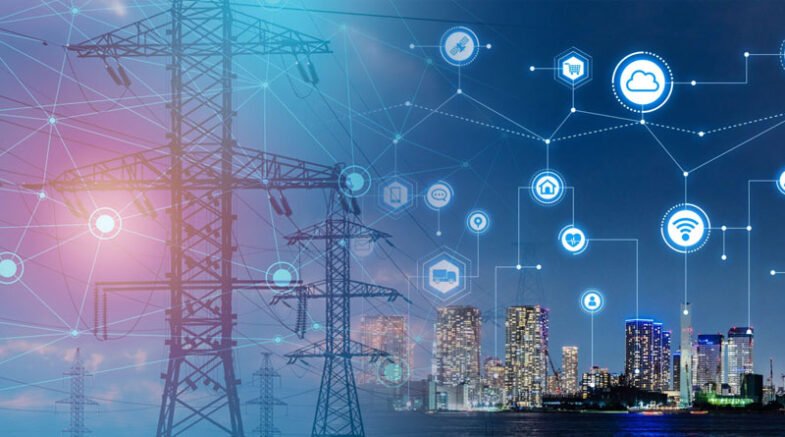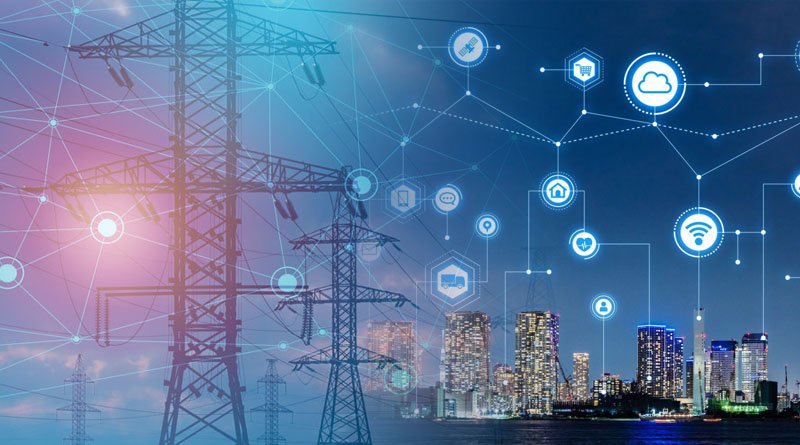Smart Grid is a modernized electrical grid that integrates advanced technologies to improve the efficiency, reliability, and security of the energy system.

Smart Grid is an advanced technology that is transforming the way we generate, distribute, and consume energy. It is a modernized electrical grid that uses advanced sensors, communication networks, and computer-based technologies to improve the efficiency, reliability, and security of the energy system. In this article, we will explore the fundamentals of Smart Grid, its key features, and its potential benefits and challenges.
What is Smart Grid?
Smart Grid is a modernized electrical grid that integrates advanced technologies to improve the efficiency, reliability, and security of the energy system. It is an intelligent energy system that uses sensors, communication networks, and computer-based technologies to optimize the generation, distribution, and consumption of electricity.
The Smart Grid is designed to be a two-way system that enables the communication and exchange of information between utilities, consumers, and distributed energy resources (DERs) such as solar panels, wind turbines, and battery storage systems. This allows for better coordination of energy supply and demand, improved grid reliability, and reduced energy costs.
Key Features of Smart Grid
Advanced Sensing and Monitoring: Smart Grid uses advanced sensors and monitoring systems to collect real-time data on energy usage, power quality, and grid conditions. This data is used to optimize the energy system, improve reliability, and reduce costs.
Advanced Communication Networks: Smart Grid uses advanced communication networks to facilitate the exchange of information between utilities, consumers, and DERs. This allows for better coordination of energy supply and demand, improved grid reliability, and reduced energy costs.
Advanced Control and Automation: The Smart Grid uses advanced control and automation systems to optimize the generation, distribution, and consumption of electricity. This allows for more efficient use of energy resources, reduced energy waste, and improved grid reliability.
Integration of DERs: The Smart Grid integrates DERs such as solar panels, wind turbines, and battery storage systems into the energy system. This allows for better coordination of energy supply and demand, improved grid reliability, and reduced energy costs.
Potential Benefits of Smart Grid
Improved Grid Reliability: Smart Grid can improve grid reliability by reducing the frequency and duration of power outages. Advanced sensing, monitoring, and control systems can detect and isolate faults in the grid, allowing for faster restoration of power.
Reduced Energy Costs: The Grid can reduce energy costs by optimizing the generation, distribution, and consumption of electricity. Advanced sensing, monitoring, and control systems can help utilities to better manage their energy resources, reducing the need for expensive peak-time generation and transmission.
Increased Renewable Energy Integration: The Smart Grid can facilitate the integration of renewable energy sources such as solar and wind into the energy system. Advanced sensing, monitoring, and control systems can help utilities better manage the intermittent nature of these energy sources, allowing for greater penetration of renewable energy.
Improved Energy Efficiency: Smart Grid can improve energy efficiency by reducing energy waste and optimizing energy use. Advanced sensing, monitoring, and control systems can help consumers to better manage their energy usage, reducing energy waste and lowering energy bills.
Challenges of the Smart Grid
Privacy and Security: The Smart Grid raises concerns over privacy and security, as it involves the collection and exchange of large amounts of personal and sensitive data. Utilities and other stakeholders must take steps to ensure that this data is protected from unauthorized access and use.
Costs and Funding: Smart Grid requires significant investment in advanced technologies and infrastructure. Utilities and governments must find ways to fund these investments, while ensuring that the benefits of the Grid are shared by all consumers.
Regulatory Frameworks: The Grid raises challenges for regulatory frameworks, as it requires new rules and regulations to facilitate the integration of DERs and the exchange of energy data. Utilities and governments must work together to develop appropriate regulatory frameworks that support the development of Smart Grid.
Conclusion
Smart Grid is an advanced technology that has the potential to transform the way we generate, distribute, and consume energy. By integrating advanced sensing, monitoring, communication, and control technologies, Smart Grid can improve the efficiency, reliability, and security of the energy system.
The benefits of Smart Grid technology are numerous, including improved grid reliability, reduced energy costs, increased renewable energy integration, and improved energy efficiency. However, Smart Grid also presents challenges related to privacy and security, costs and funding, and regulatory frameworks.
To fully realize the potential of Smart Grid, utilities, governments, and other stakeholders must work together to overcome these challenges and build a modernized, sustainable, and resilient energy system. This will require significant investment in advanced technologies and infrastructure, as well as the development of appropriate regulatory frameworks and policies.
Overall, Smart Grid represents a major opportunity to create a more sustainable, efficient, and resilient energy system that can meet the needs of consumers and businesses in the 21st century and beyond. By embracing this technology and working together to address the challenges it presents, we can build a better future for ourselves and for generations to come.
